Before sophisticated marketing and advertising technologies existed, the “spray and pray” method used to be all marketers knew. Billboards, radio ads, TV commercials, and full-page magazine ads were all relied upon to produce positive results with no real market segmentation to target ideal customers. Now, all kinds of platforms exist for digital marketers to filter out the masses and hone-in on exactly who they want.
Marketing segmentation is a reality and the most successful digital marketers leverage tools to make it happen. Of course, mass marketing methods are still prevalent, but these undifferentiated campaigns leave a lot to be desired when you consider that global ad spend continues to climb each year:
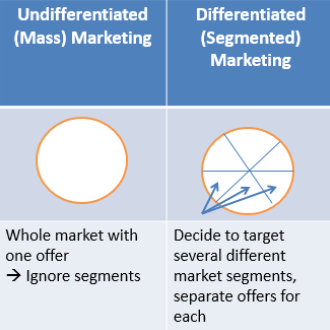
People are more likely to appreciate and engage with brands that take the time to personalize their ads with dedicated offers created for them.
What is market segmentation?
Market segmentation, also called customer segmentation, divides a broad target population into smaller groups or customer persona subsets with similar needs, interests, preferences, and characteristics. In addition to commonalities among individuals in a segment, marketers must also ensure that the individuals respond in a similar way to pitched marketing activities so that they can capitalize accordingly.
With countless ways to divide customers into groups, your marketing segmentation definition and strategy may differ from your competitor’s.
Since your target customers are unique individuals with various needs and preferences, there is no one-size-fits-all solution when marketing to them. You must segment and use marketing intelligence about each group to develop personalized, highly appealing advertising campaigns for each one.
Why is marketing segmentation important?
Segmentation marketing exists to serve one main purpose: increase ROI.
Through customer segmentation and personalized marketing campaigns, companies reduce the risk of running campaigns to uninterested consumers. This increased campaign efficiency focuses resources on more ROI-producing efforts.
In fact, Harvard Business found that 85% of 30,000 new product launches in the US failed to generate desired revenue due to poor market segmentation. Conversely, marketers have seen a 760% increase in email revenue by segmenting their campaigns:
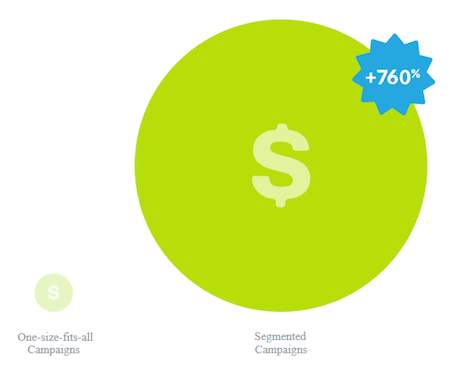
MailChimp, for example, sampled around 2,000 users who sent roughly 11,000 segmented campaigns to almost 9 million recipients. Upon comparing the results to those of the same customers’ non-segmented campaigns, they found that the segmentation made all the difference:
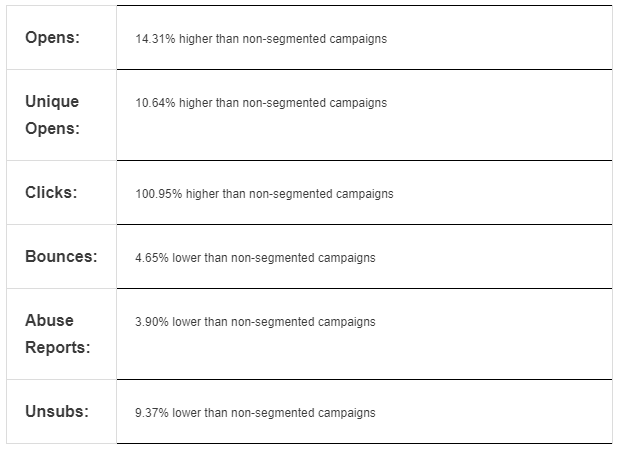
The research proves that marketing segmentation produces better overall results, from higher email open rates to increased ROI — but how exactly?
Increased competitiveness and market expansion
By focusing on a specific subset of prospects, your competitiveness in that market segment naturally increases. If you’re focusing primarily on retired seniors, putting the majority of your time and resources into them, your brand recall and brand loyalty are likely to increase as well, eliminating other competitors.
Your market share can also increase by focusing on certain market segments. For instance, with a geography-based market strategy, you can start catering to San Francisco, then the greater bay area, and ultimately the state of California and beyond over time.
Improved time and money efficiency
Launching marketing campaigns designed specifically for distinct groups allows you to prioritize customer segments that are more likely to engage and convert. By concentrating conversion efforts on them, instead of spreading resources evenly across all segments, time and money are used more efficiently.
Better relationships and customer retention
The process of market segmentation revolves around constantly learning more about your customers so you can better match their needs to serve them better. It only makes sense that the more you get to know them, the stronger your communication and overall relationship with them becomes.
Improved relationships then make it harder for them to leave you — greater customer retention. As you use customer segmentation to follow along with their changing circumstances — they age, form families, change jobs, develop new interests, change buying patterns, etc. — you can continue to market to them appropriately. By marketing products and services that appeal to customers at different life stages, you can retain customers who might otherwise switch to competitors.
Types of marketing segmentation
Market segments can be established using three general criteria:
- Homogeneity — common needs within a segment
- Distinction — uniqueness from other segments
- Reaction — a similar response to marketing tactics
Using these three criteria, markets can be divided up further using four main types of marketing segmentation:
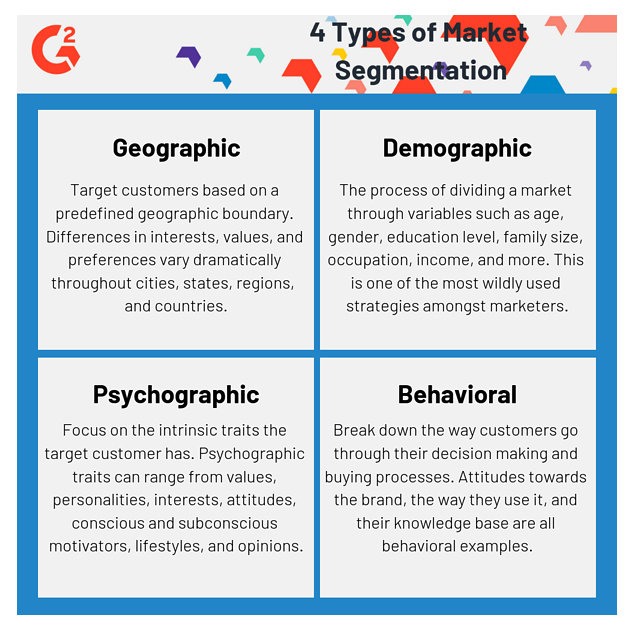
1. Geographic segmentation
Marketers who use geographic segmentation create target customer groups based on regional topics and needs. This type of segmentation can take many forms, such as warm vs. cold climates, urban vs. rural, north vs. south, seacoasts vs. interior, humidity vs. dry, high elevation vs. low elevation, etc.).
For example, a company may choose to market its country-style gravy only in the southeast, while another company might choose to market its Picante sauce only the southwest. A chainsaw company might only market its products in highly-wooded areas, while a surfboard company would likely have the best luck selling to people near the ocean.
2. Demographic segmentation
This is one of the simplest and most commonly used types of customer segmentation, that sorts a market by variables such as age, gender, marital status, family size, income, education, race, occupation, nationality, religion. Demographic segmentation is seen in almost every industry because customers’ buying behavior is largely influenced by their demographics.
Case in point, this Qeepsake Facebook ad is aimed at busy mothers who often post pictures of their children on Facebook:
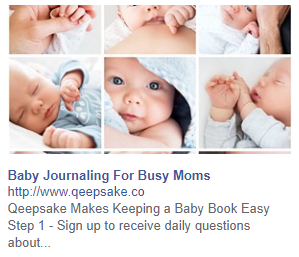
Consider the automobile industry as well. The automotive industry has various price brackets in which automobiles are manufactured, and advertisers target those specific price brackets to different audiences. For example, Maruti is in a lower price bracket and therefore aimed at lower- and middle-class populations. Meanwhile, Audi and BMW carry a higher price tag, so they target high-end buyers.
3. Behavioral segmentation
Behavioral segmentation divides the target population based on individuals’ online behaviors, choices, decision-making patterns, and product usage:
- How they use your website (pages visited, frequency and length of visits, links clicked)
- How much they know about your products (stage of the buyer’s journey)
- How much they use your products (new vs. repeat customers; light, medium, or heavy usage)
- How they make decisions (carefully and slowly, or more impulsively)
Based on that criterion, take a look at the segmentation example and image below to see how behavioral segmentation could affect your revenue:
- VIP customers: users who shop the most often and/or spend the most money
- High-tier recurring customers: active, long-time, repeat users
- Reactivated customers: users who previously made a purchase, became inactive, and then later made another purchase
- Low-tier recurring customers: users who shop less often and spend less money
- New customers: users who recently made their first purchase
- New registrants: users who recently registered for your mailing list, but haven’t made a purchase
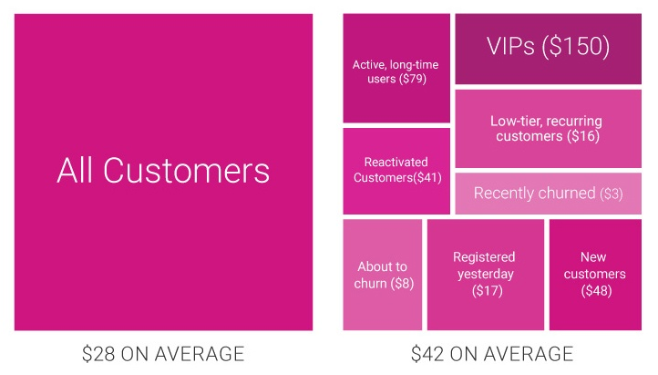
4. Psychographic segmentation
This type of segmentation takes behavioral one step further by considering the psychological aspects of consumer buying behavior — lifestyle, interests, values, opinions, personality traits, temperament, etc.
Brands in the fitness market often use psychographic segmentation to sort their customers into categories of people interested in different aspects of health and fitness. Nike, for instance, offers a wide variety of footwear and clothing, but only markets certain products to certain segments, depending on interests and lifestyles (running, weightlifting, yoga, etc.).
How segmentation can apply to landing pages
To illustrate this point, review the following examples for similar search terms and how different the experience is for the user.
Microworks created this search ad promising a demo (they likely segmented their market based on keyword bids, similar to “POS demo”):
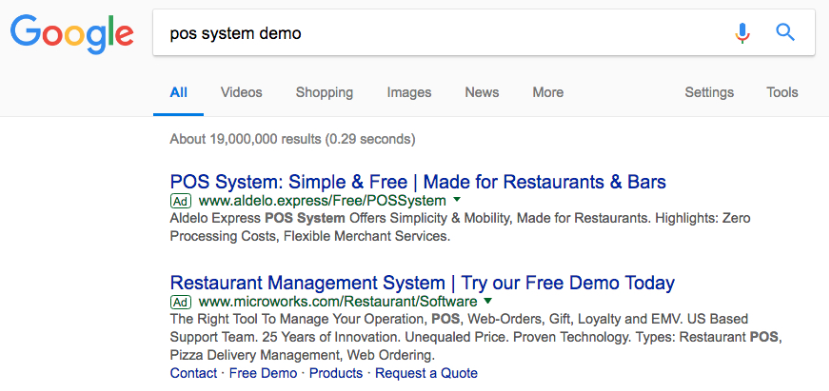
However, they didn’t complete the process with a personalized landing page for the user to convert. When people click the ad, they see this page with no mention of a demo except the tiny header link in the navigation:
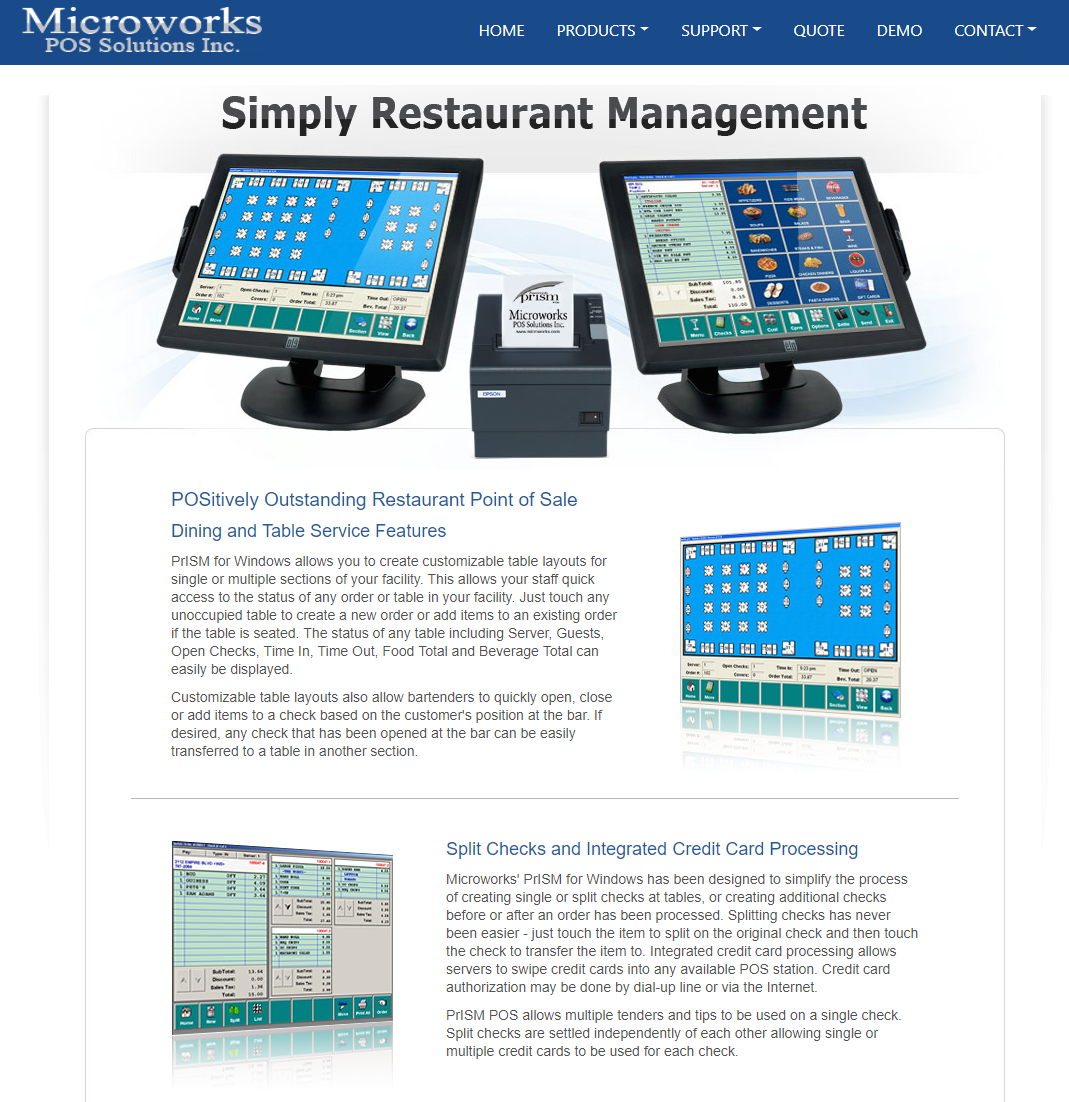
Every Google Ad should be paired with a high-quality landing page to lower the cost of customer acquisition. Microworks failed to do this and instead provided a fractured user experience, which most likely leads to higher bounce rates, fewer leads, and sales.
Conversely, the sitelink extensions on this search result take prospects to their respective, message matched landing pages:
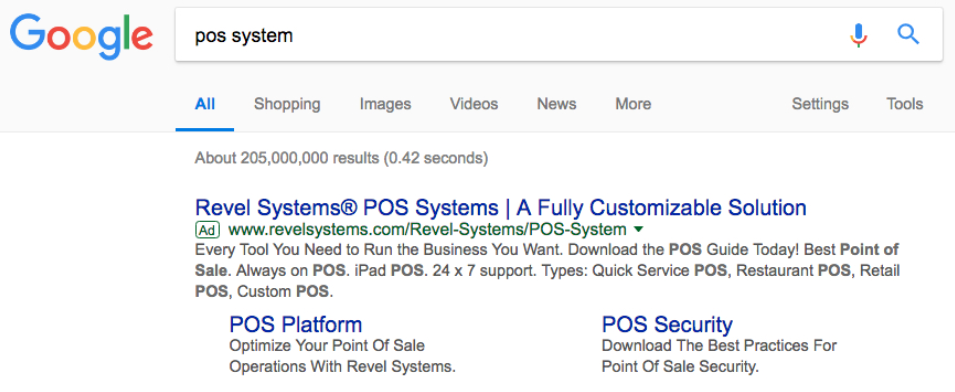
First, a POS Platform landing page:
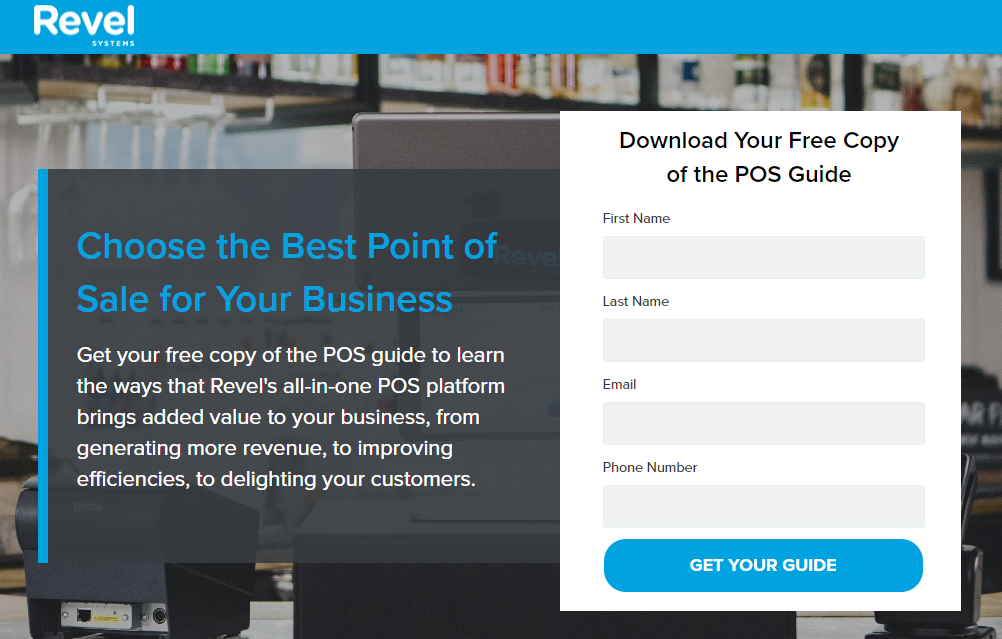
Then, a dedicated page for POS Security:
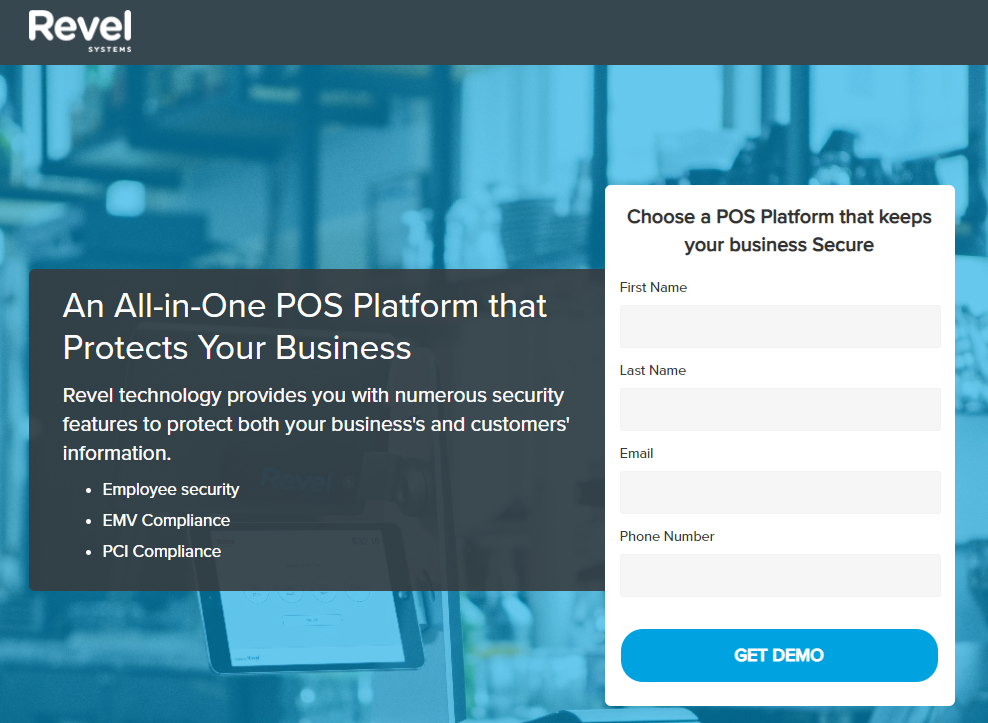
With a customer segmented marketing campaign from ad to landing page, Revel Systems likely lowered the cost of their customer acquisition.
Take the time to segment your campaigns
The better you know your target customer, the more personalized campaigns you can deliver, and the higher the chance it will result in a favorable, cost-effective outcome for you.
For more on how to make the most out of your landing page marketing efforts, sign up for an Instapage 14-day free trial today.

Try the world's most advanced landing page platform with a risk-free trial.
